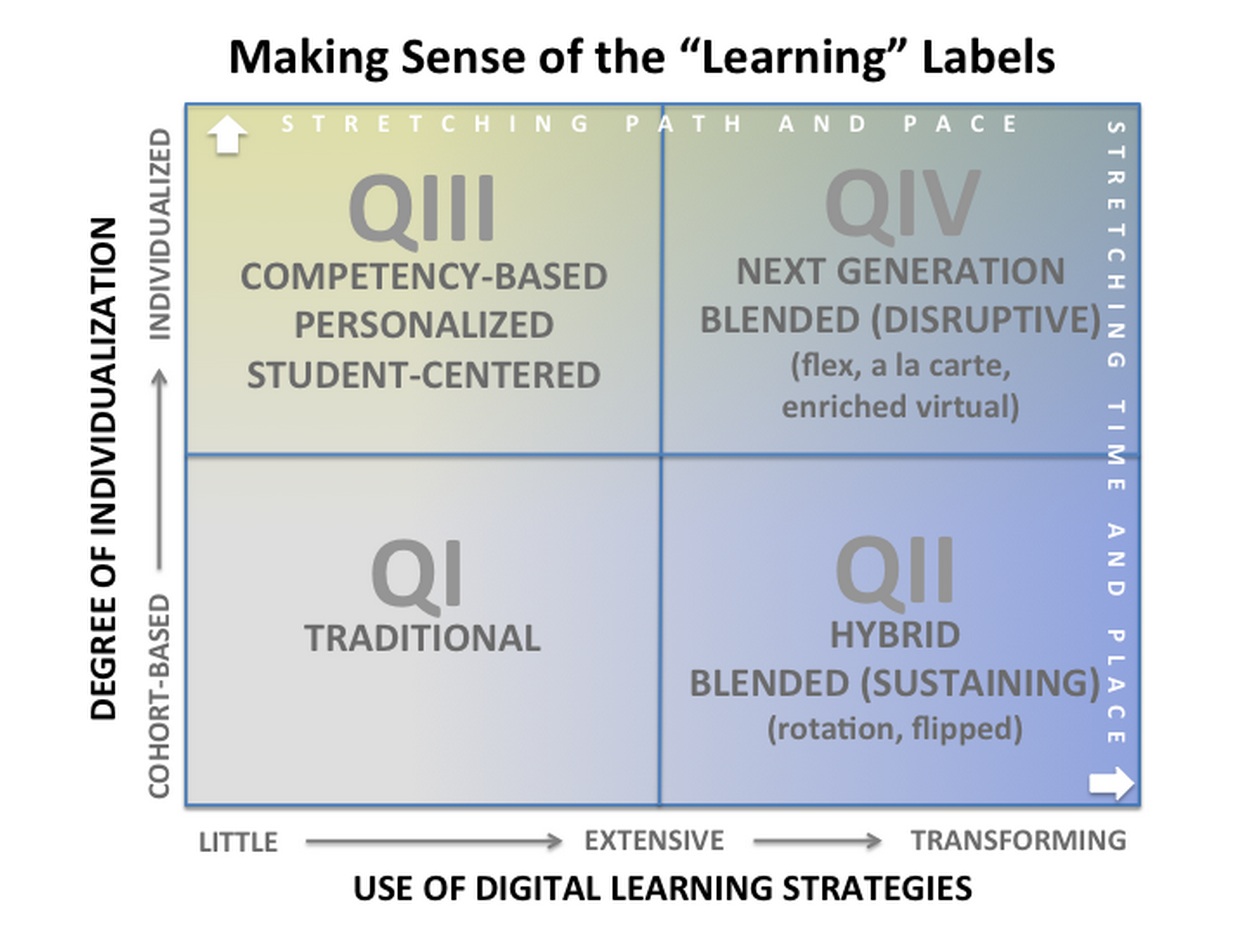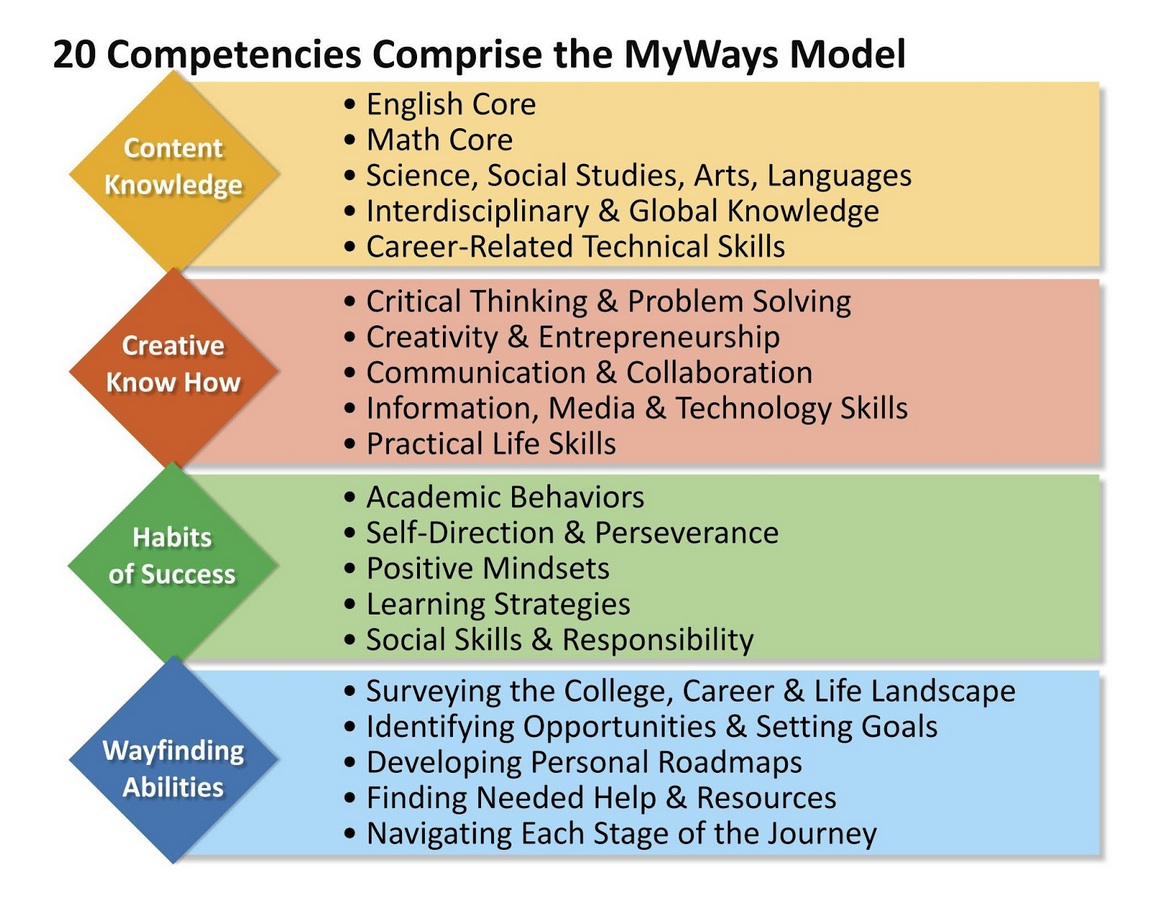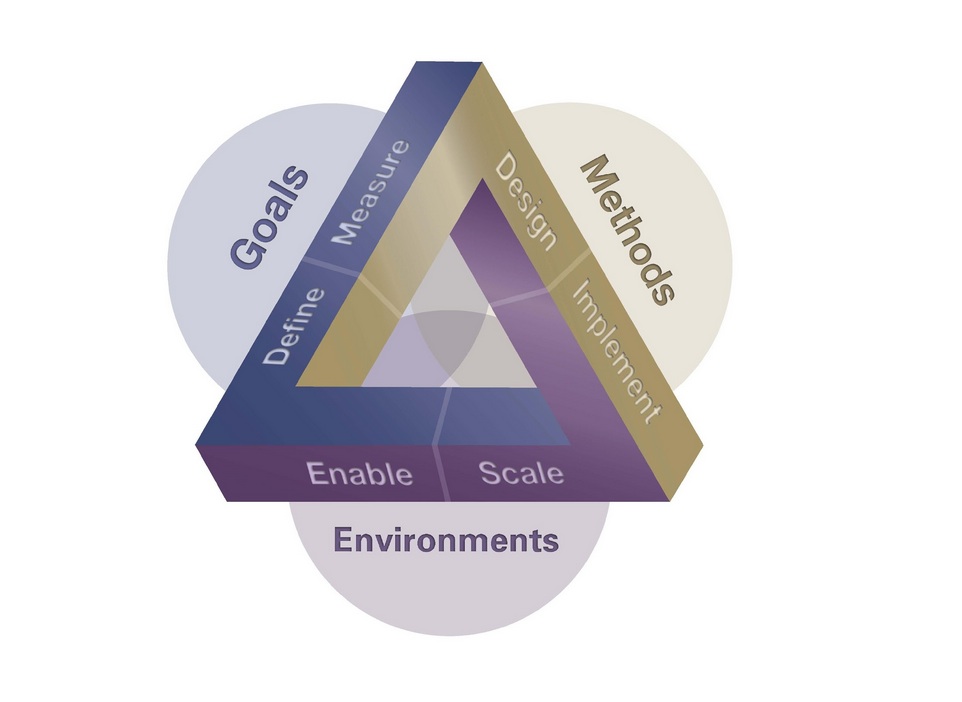Moving towards personalized learning is like starting to drive on the left hand side of the road in after a lifetime of driving on the right. Absolutely everything flips.
Personalized learning isn’t a project to be grafted onto the traditional-school-model side of the road. It’s a fundamental shift away from a curriculum- and teaching-centered orientation toward one that instead is learning- and student-centered. So, how can education leaders pursue such a massive shift deliberately and thoughtfully?
Here are five suggestions and tools to get you started. They are based on what we have observed from the Next Generation Learning Challenges (NGLC) grant recipients who have designed or redesigned whole schools to be personalized through student-centered, competency-based, blended, and other next gen learning strategies. Use them to catalyze the conversations, outreach and extensive design work that must happen before widespread changes in the learning model are actually introduced in your schools.
1. A framework to understand personalized learning. It’s important for your school community to understand what your personalized learning initiative is and what it isn’t. In Moving Towards Next Gen Learning, we place personalized learning, blended learning, competency-based learning and next gen learning in different quadrants of a 2x2 grid based on the degree of individualization that the learning strategy provides and the extent that digital learning strategies are used.

In personalized learning, students have some say in customizing the design and management of their learning pathways and pace. That’s why we situate personalized learning at a high degree of individualization. But we also recognize that personalization may or may not be digitally supported. In order for personalized learning to serve millions of students effectively, we suggest that seamlessly integrated technology plays an important role, and we call that “next gen learning.” To see examples of schools that are fundamentally designed around individualization of path and pace and self-directed learning, take a look at Thrive Public Schools, Montessori for All, and Caliber Schools.
2. A framework to customize a personalized learning approach for your school. NGLC co-published a toolkit with iNACOL to help educators determine their own goals when it comes to personalized learning and the pathway to change that best fits their community and students. RETHINK: Planning and Designing for K-12 Next Generation Learning does not offer a prescriptive model to follow. Instead, it provides guiding questions, resources, and toolsto customize your approach. These are organized around four key issues: understanding next generation learning models; planning for and managing change; designing next generation learning opportunities; and engaging the planning team and stakeholders in the process.

3. A framework to define success for your students. To provide personalized learning effectively, schools need a firm grasp of the competencies required for college, career and life success and they need to know where their students’ strengths and gaps lie. To help bring clarity to all of the different success definitions associated with college, career and life readiness, NGLC has been working with a number of our grantees on a project called MyWays. Our goal is to create a synthesized definition and set of practical tools to map a student’s current readiness and then plan to attain that deeper/richer definition of success. MyWays surfaced 20 competencies arranged in four general areas: Content Knowledge, Creative Know How, Habits of Success and Wayfinding.

This framework enables a school to understand the needs of its students in a comprehensive way that recognizes the depth and complexity of student success. From there, schools can begin to build a personalized learning approach that meets the needs of their students. NGLC will begin releasing MyWays tools and frameworks later this spring, in time for summer planning.
4. A framework to promote comprehensiveness in your approach. For personalized learning to take root, educators need to consider not just the success goals and academic design of personalized learning, but all six dimensions of a framework we introduced in the white paper, Next Generation Learning: The Pathway to Possibility.
Approaching Next Gen Learning Comprehensively

- Defined learning goals indicating readiness for college, career, and civic life
- Measurement of progress against those goals
- Learning designs that are personalized, competency-based, supportive, data-informed, inclusive, and enabled by technology
- Effective implementation encompassing fundamental restructuring of roles, resources, and infrastructure and continuous improvement cycles
- Enabling conditions, both internal and external, for that implementation to proceed with fidelity to the original design
- Sufficient investment and evidence, among other environmental factors, to allow for rapid scale-up
The NGLC grantee experiences strongly suggest that these six dimensions are directly inter-related and inter-dependent. Initiatives that attend to just one or two of these elements will not create lasting change; all six are required to help more students emerge from high school with the capacities they’ll need to succeed.
5. A framework to activate your plan in your school. There is no commonly accepted “playbook” for implementing personalized or next gen learning – and that’s appropriate, given the early stages of the pioneering school models in understanding what it looks like and how to do it well. Various organizations including CompetencyWorks, CCSSO, CAST, Christensen Institute, Jobs for the Future (through its Students at the Center initiative) and the U.S. Department of Education (reflecting early work of its Race to the Top districts) have published preliminary framing tools for what teachers and school leaders do to personalize learning for students.
All of these tools can contribute to a planning team’s understanding of the components of personalized, next gen learning. The fact that there isn’t a “bible” – yet – is, we believe, a positive thing. The core tenets of personalized learning relate to deep engagement and ownership – not just by students, but by the adults working with them. At this stage in the development of personalized learning, it is too early to lay claim to one approach as the best or most promising. The most thoughtful initiatives will come from planning teams that can embrace this ambiguity and construct their own “customized” path to the practice of personalized learning.


